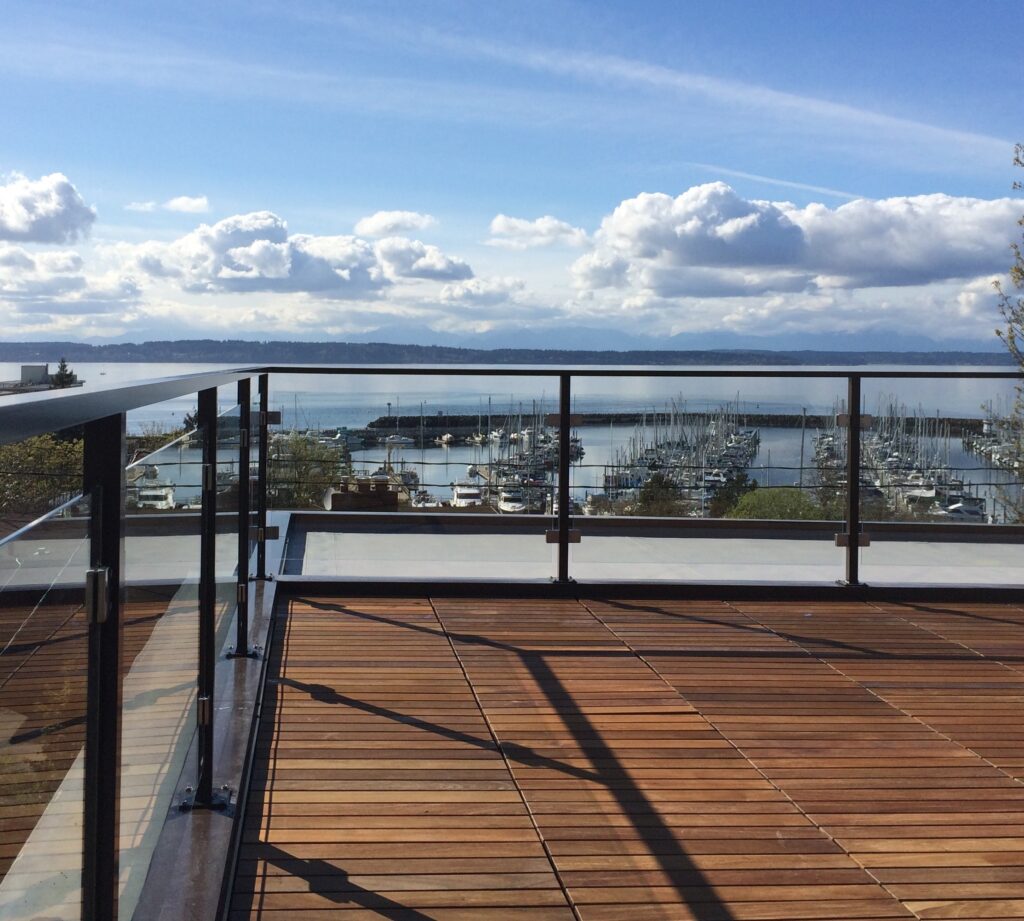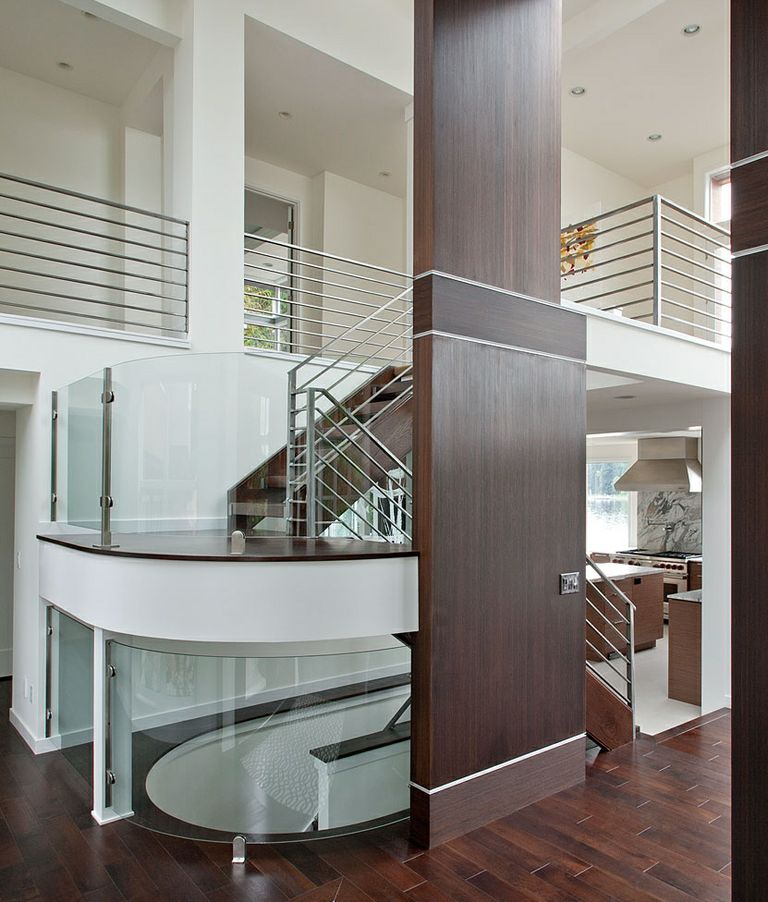Glass railings, a symbol of architectural precision, are not just barriers but a statement that merges the boundaries between indoor rooms or outdoor spaces. The evolution of glass as a prime material for railings, particularly in commercial settings and luxury residences, underscores its ability to provide both transparency and structural performance. Dive into the world of glass railings, exploring their types, design considerations, advantages, and the vital role of top rails.

A little history
Glass railings have transformed from simple safety barriers to architectural features that enhance visual connectivity and openness. From the industrial standard of metal pipe railings to the introduction of glass balustrades, the journey of railing design has been marked by innovation and changing building codes. The first patent for a structural glass balustrade shoe in 1967 paved the way for the growing popularity of glass railings, driven by both aesthetic desires and evolving safety standards.
The Types of Glass Railings
- Full-Height Railings: These integrate glass into the fabric of the building, serving as both barrier and architectural element. They must be designed with precise adherence to safety standards.
- Railings with Glass Infill Panels: Combining a sturdy frame with glass panels, this design leverages the strength of traditional materials for support while using glass to fill the gaps, ensuring unobstructed views.
- Freestanding Glass Protective Railings: Designed to withstand loads independently, these railings use laminated glass clamped along the bottom edge, often without the need for additional balusters.
- Bracket Systems: Employing brackets attached to the structure’s face, this approach demands careful consideration to manage the stresses imposed on the glass.
To Top Rail or Not to Top Rail
The debate over whether to include a top rail in glass railing designs touches on both aesthetics and safety. Historically, guardrails were assumed to be metal assemblies designed to protect against falls. However, as glass railings became more common, the need to adapt building codes became apparent. The introduction of glass railing standards in the 1988 Uniform Building Code (UBC) marked a significant shift, specifying the need for handrails or guardrails in conjunction with glass balustrades.


The requirement for a top rail has been a point of contention within the industry, balancing the desire for unobstructed views with the necessity of ensuring safety. Innovations in laminated glass and engineering practices have led to exceptions in building codes, allowing for top rail-free designs under certain conditions. These developments reflect a broader trend towards maximizing transparency and light, particularly in spaces where views are paramount, such as sports arenas and theaters.
The Evolution of Building Codes and Glass Railing Design
As architectural preferences have evolved, so too have the building codes that govern the design and installation of glass railings. The codes now address the unique properties of glass, requiring designs to account for glass strength, safety glazing, and the consequences of breakage. This ensures that glass railings not only meet aesthetic goals but also adhere to stringent safety standards.
The introduction of testing procedures, such as those outlined in the ASTM E2353 standard for laminated glass railings without top rails, represents a significant step forward in codifying safety measures for glass railing systems. These standards are crucial for engineers, architects, and building owners, guiding the safe and effective use of glass in railing designs.
Embracing Transparency: The Advantages of Glass Railings
Glass railings offer a range of benefits that extend beyond their visual appeal:
- Maintenance: Glass is resistant to corrosion, rot, and decay, making it a durable option that requires little upkeep.
- Aesthetic Value: The transparency of glass railings enhances the perceived size of spaces, potentially increasing a property’s market value.
- Versatility: Suitable for a variety of applications, glass railings can adapt to any architectural style, from residential homes to commercial buildings.

Glass railings embody the intersection of form and function, offering a blend of safety, transparency, and aesthetic flexibility that can elevate any architectural project. As building codes evolve to accommodate the unique characteristics of glass, the potential for innovative design continues to expand, promising new horizons for architects and designers alike.
